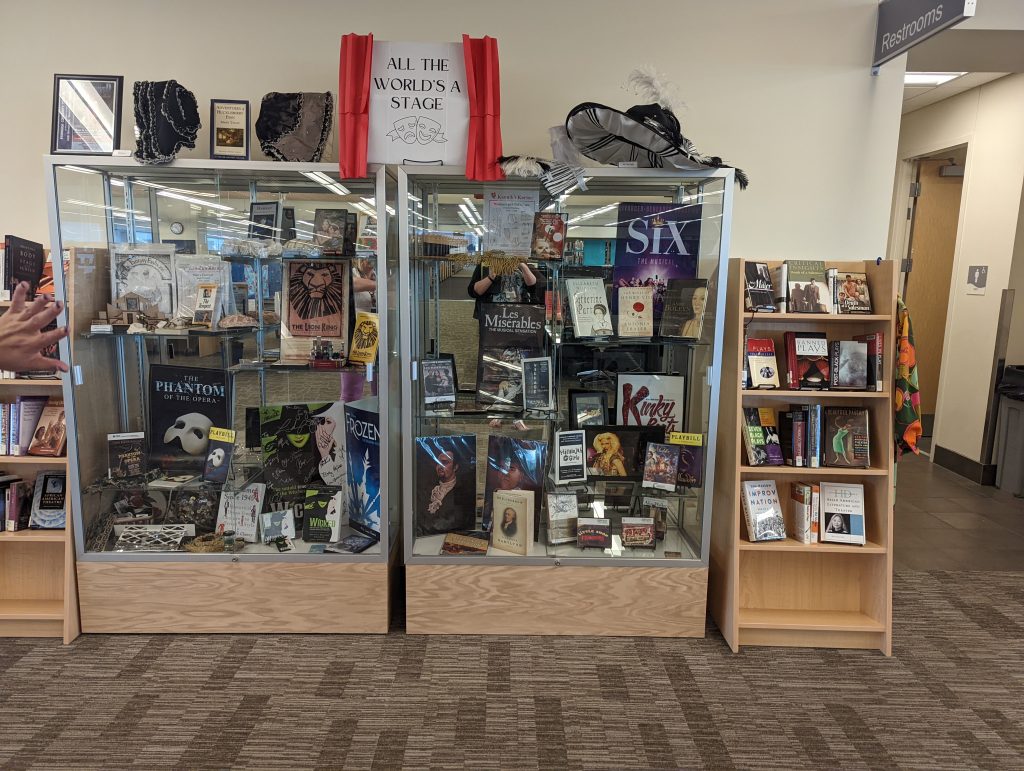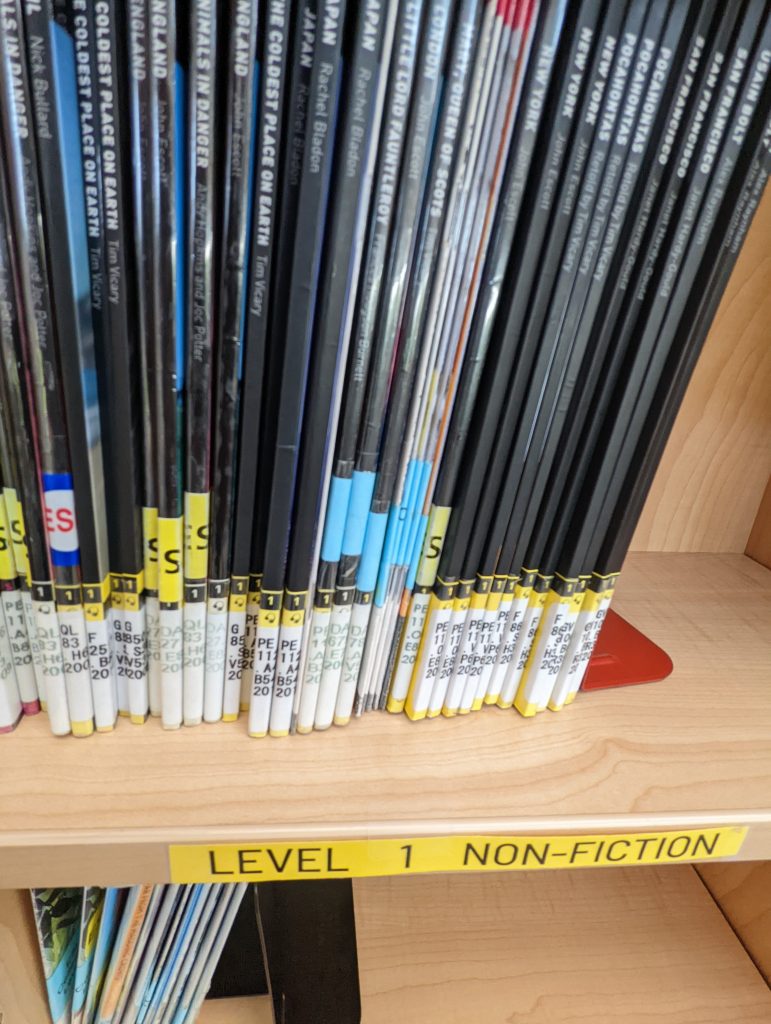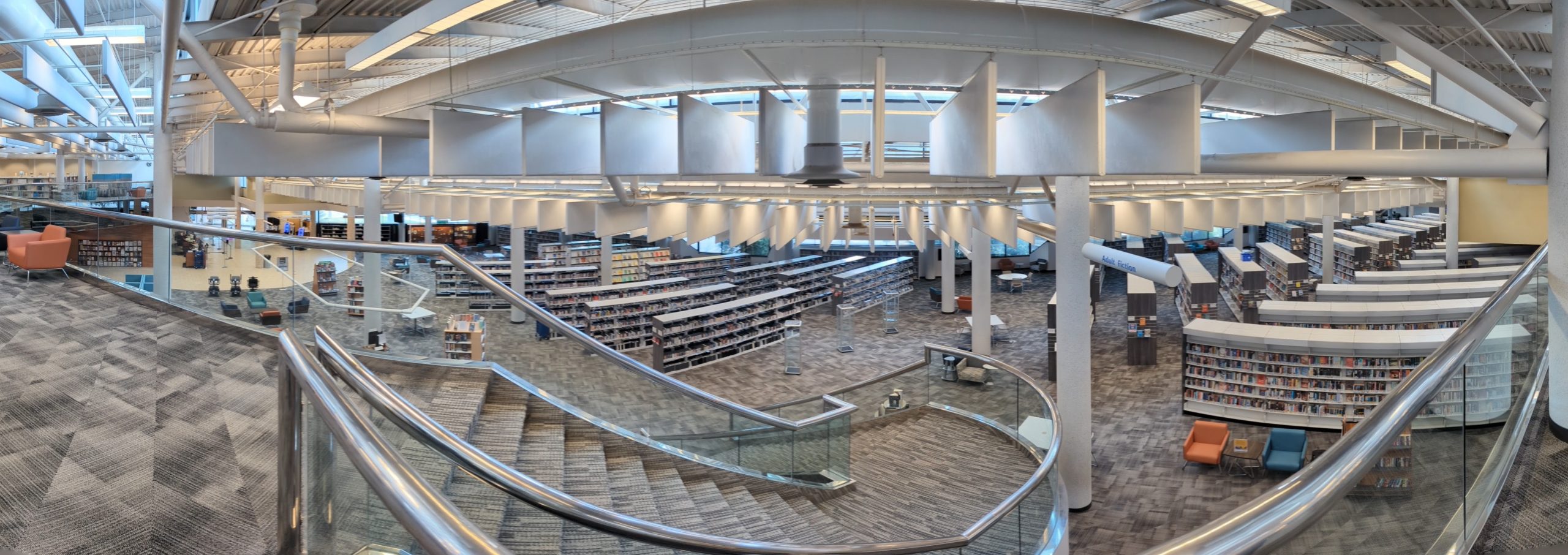The Space and Physical Access

The Tidewater Community College/City of Virginia Beach Joint-Use Library, or JUL (pronounced like “jewel”) is a very unique library in that it is a joint venture between Tidewater Community College (TCC) and Virginia Beach Public Libraries (VBPL). It is half public library downstairs and half academic library upstairs. For the purposes of this post, I will be concentrating exclusively on the academic library half of this joint venture and not the public half. Located on the Virginia Beach TCC campus, the JUL is the biggest library in Virginia Beach, nearly 1/3 bigger than the Meyera E. Oberndorf Central Library and serves as the main hub for TCC libraries in Hampton Roads. Most of the administrative offices for the library department are held here as is the entire cataloging staff. JUL is situated on the back end of the TCC campus right on Rosemont Road, which is a bit of a drive for most of the city, however what it lacks in being easy to locate, it makes up for in being enormous and impossible to miss as long as you can find the campus. The building looks like a cross between a small shopping mall and a large university library which it partially is. Although it has plenty of parking, access to the building is both hidden and confusing. The entrance is technically situated on the side of the large curved building and the nearest accessibility parking spaces are quote far from the front door. They do have temporary parking up front for quick pick ups but anyone looking to linger is in for a walk, and that is just to get inside the building.

Access to the academic Library is available through the stairs that you immediately encounter upon entering or elevators which are just off of the side of the stairs. There are multiple elevators throughout the building to allow access to the academic and public half throughout the extremely large space. When you first enter the academic library, you are immediately met with a large reference desk in front of a huge computer area and rows of bookshelves. Interspersed among the bookshelves are several displays highlighting topics relevant to classes and events being held at TCC. When I visited there was an amazing theater display that highlighted a lot of books and resources relevant to theater students. Like many academic libraries, the space feels both cozy and awe-inspiring. There are plenty of tables and study carrels available for reading and working and there’s also plenty of computers available as well. JUL also has dozens of study rooms available that can be reserved online. Almost all of the books that you immediately encounter are academic in nature; there is little-to-no popular reading. What sets JUL apart from different academic libraries that I visited is the more modern look and feel to it as well as the tons and tons of windows that span the entire length of the building. Even upstairs this space is very bright very open and very airy
People, Collections, and Services
JUL has 12 to 15 staff members in its building, the majority of which are degree holding librarians. There are also several paraprofessional level employees that are referred to as Library specialists and two cataloging staff members down in the distribution center that handle cataloging and deliveries for the entire TCC library system. The librarians primarily handle working the reference desk, answer reference questions both online and in person, and provide instruction for TCC classes. They do a lot of InterLibrary loans in particular and usually work closely with professors to develop instruction. While most of the access to journals and scholarly publications has moved online, they do still retain a sizable reference collection as well as a test collection specifically for test prep.

One of the most fascinating aspects of the collection that impressed me was their ESL collection. The ESL collection is organized into reading levels based on English comprehension and then color coded to indicate the different levels. When students attend the ESL classes they work with the teacher to determine what level of books they should check out so that they can then go to the library and easily find what they need. The color coding helps mitigate any language barriers as it gives them a way to identify books without relying on English while still giving them the opportunity to practice their language skills. Not only is this a huge win for accessibility, but it also speaks well to the collaborative efforts between the academic library staff and the TCC teaching staff. In our readings, Rubin and Rubin talk about how academic libraries have shifted to be more modern in both how they are built and laid out and also how they apply pedagogical principles by facilitating more active learner activities (Rubin & Rubin, 2020). JUL is definitely representative of this idea in how its collections support existing classes and incorporate directly into active learning activities arranged between the professors and the library, such as the ESL collections set-up.
In addition to instructions and engaging students with the collection, JUL also provides reference assistance in person, online, and by phone. All of the TCC librarians at all of the campuses rotate monitoring the TCC library “Ask a Librarian” chat service. JUL librarians and library staff also work the reference desk and answer phones providing reference assistance in both locations. Of the librarians I spoke to, many agreed that the most challenging part of their services is having to establish with students that they are there to get them started with research skills, not to do research for or with them. In a public library, librarians will routinely take down questions, do research and provide and answer. By contrast, JUL, like other academic libraries, will recommend resources, help students develop search strategies, and direct them to databases and books that might be relevant/ It is a more “teach a man/woman to fish” principle. However, because the building also grants access to all of the college materials and databases to the general public by virtue of being a joint-use library, the staff often have to tailor and adjust their approach slightly depending on whether they are assisting a student or a general member of the public. Coming from a public library, it was interesting to see how questions that I would be expected to answer for people would not be handled in the same way in the academic library.
The academic library is primarily used by students looking to study. While JUL does do reference appointments, the librarians mentioned that the majority of people who come into the building are coming in to make use of the study areas and conference rooms. It’s especially slow during the summer or during semester break where there are not a lot of students attending classes. Working with the general public does increase the amount of customers they get and much of the assistance they end up providing is helping public library card holders access and use the academic facilities. Anyone with a VBPL card can use TCC’s academic resources, database, and computers though there are some specialty computers and materials set aside exclusively for access by TCC students. JUL also hosts some college events in seminars in a large area known as the Crystal and those are typically attended by a lot of students. Overall the academic library caters towards a more study-driven and workspace-seeking crowd.
Digital Access
The academic side of JUL does not have its own website but does have its own web page under the larger TCC Libraries website which can be found at https://libguides.tcc.edu/LibraryPage. The home page links to several helpful subject guides on topics such as LGBTQ+ and Anti-racism. The catalog search covering all TCC holdings is also available on the page along with the Ask a Librarian feature, news alerts, links to student resources, links to faculty resources, and contact information for the department at large. The website is very bare bones but it’s easy to navigate. JUL’s webpage can be found under the campus libraries section and provides contact information as well as information about specific information about some of the features at JUL. One of the more useful links is the one that leads to study room reservations so users can book specific rooms in advance. Additionally, since the collection is half academic and half public, the JUL webpage has a link to a page that features both the TCC catalog and VBPL catalog search features so users can quickly access both holdings. The overall TCC library website also features resources for creating citations, finding articles, research guides, and more. Overall the website is pretty user friendly, though it is a bit difficult to find from the TCC page. It’s easiest to find by Googling TCC or JUL.
Other Thoughts
The academic section of the Joint Use Library is a beautiful space with lots of the offerings you would find typical of an academic library. Having it so easily accessible to the general public as well as students is a unique concept and a valuable resource to the community. There are a lot of databases and print materials available for research and there is plenty of space to study and collaborate. The staff were very friendly but they take a kind of hands off approach to their services, which could be explained by the nature of the more instructional services an academic library has to offer. The hours are also often chaotic and subject to change. Currently they close almost everyday except Monday by 5 (Tidewater Community College, 2022) which is not conducive to most students looking to do homework after classes or work. It certainly is not helpful for the general public of working adults, though they are more the target of the public half of the building than the downstairs. What was most disappointing was the underutilization of the building. The entire time I was there, there were three students total in a building that could easily hold hundreds. I frequent the public half often for meetings and it holds consistently true there as well. Even downstairs the public sector maybe had a handful more. Whether it’s location, the intimidating nature of the building, the weird hours, the unusual nature of the library, JUL does not often have crowds unless there are events going on. Out of curiosity, I checked the door count data since it’s tracked as part of VBPL and was shocked to see they were only the 6th highest out of the 10 Virginia Beach libraries and had less the 2/5ths of the door count of the highest branch, which was Central (Virginia Beach Public Library, personal communication, May 14, 2021). With so many wonderful resources and unique opportunities for students and the public to get the best of both academic and public libraries, it’s a shame to see how many people don’t take advantage of it. I can’t recommend enough that everyone stop by JUL and check out all the neat things they have. It’s such a unique place and they have a lot to offer for academic and public users alike.
References
Rubin, R. E., & Rubin, R. G. (2020). Foundations of library and information science (5th ed.). ALA Neal-Schuman.
Tidewater Community College. (2022, Jun 29). Joint-Use Library. Tidewater Community College Libraries. https://libguides.tcc.edu/JUL/.

Thanks for another great look at a local resource! Even though my husband got his Associate’s at TCC a couple of years ago, I was totally unaware of JUL. So I’m not totally surprised that they have a lower foot traffic, especially when you also consider the weird hours that you pointed out. I love the obvious collaboration that is happening to create resources like the color coded ESL materials here. And agree that it’s a great resource for VBPL card holders to have access to the academic journals and database!
This is an interesting collaboration between the school and city. It’s great to hear they have a large ESL collection. I am sure it is challenging for staff to bounce between serving students and servicing the public. I also like how you saw features from different classes. What a nice way to promote certain classes from the college.
What a unique library building. To have both the public and academic libraries together is a wonderful opportunity for the students and general public. It is a shame that the space isn’t used more.
What an interesting library! I like that academic libraries are open for the public to use, with some services set aside just for students. I think the color system for people learning English is so smart! If they don’t feel completely comfortable asking for help, they know to look for the color that coincides with their level. Closing at 5 is such an odd time, especially as you pointed out, that students usually would want to use the library after 5 since a majority of college classes are in the afternoon. I wonder why.
Wow, thanks for sharing this local one! I have not been here yet! The ELL section you found is fascinating, thanks for sharing how that is organized. I am also fascinated with the whole “chat with a librarian” feature. When this feature first came out, I always wondered if it was a real person responding. Yes, that is someone’s job! It’s interesting what the librarians said about helping students with research, that they are not there to research with them or for them… that made me chuckle. I appreciated you comparing this to your role in the public library. Interesting how the public versus the academic role differs in that regard.